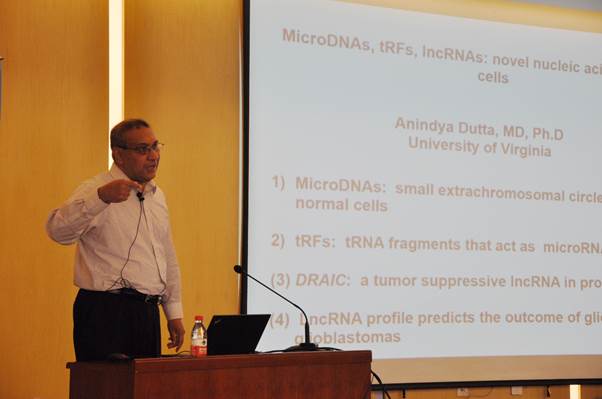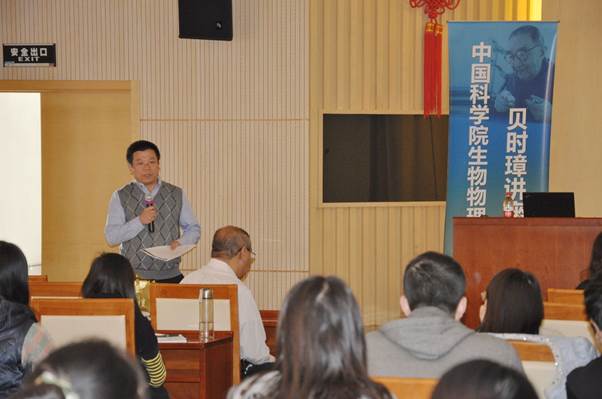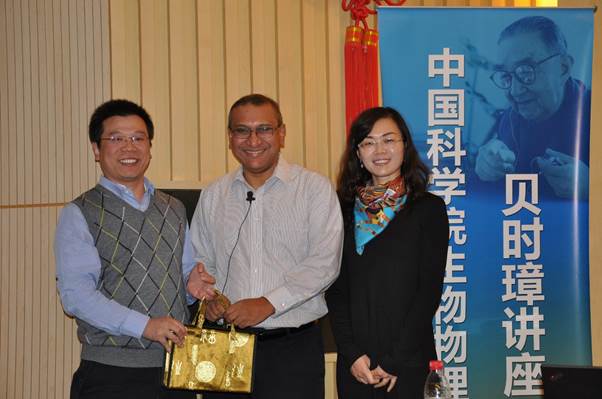Prof. Anindya Dutta from University of Virginia Visited the Institute of Biophysics and Delivered the Shizhang Bei Lecture
On November 7, 2016, Prof. Anindya Dutta from the University of Virginia visited Institute of Biophysics at the invitation of Prof. Ruiming Xu and delivered a lecture entitled “Novel nucleic acids in cell proliferation and differentiation: microRNAs, tRFs and lncRNAs”. The report was hosted by Prof. Guohong Li.
This lecture is divided into three parts, microDNAs, tRFs and lncRNAs. mDNAs are less than 400-bp extrachromosomal circular DNA molecules. Prof. Dutta found that these circular DNAs exist in a variety of tissues and are likely to arise from areas with high GC content, and exon density. The production of miDNAs leads to the deletion of corresponding loci of the genome, which is referred to as microdeletion. Prof. Dutta found that microDNAs is a part of normal cellular physiology, which may be caused by DNA breaks associated with RNA metabolism or during the process of DNA mismatch repair. Prof. Dutta hopes that there will be more researchers participating in the study of miDNAs, and this will help to figure out how these small circular DNAs are involved in activities of living cells. The second part of the lecture is about tRFs (tRNA-derived RNA fragments), tRFs is a class of small non-coding RNAs produced by cleavage of tRNAs, the generation of tRFs is independent of Dicer and Drosha which perform the cleavage of siRNA and miRNA. Further research has shown that tRFs repress genes by Argonaute protein-dependent pathways. Prof. Dutta has also established the tRFs database to assist researchers in searching related small RNAs. Finally, Prof. Dutta introduced a newly discovered lncRNA, DRAIC. DRAIC is a tumor suppressor, and the knockdown of DRAIC can induce cellular migration and invasion.
Prof. Dutta’s report was rich and lively, the participants has gained a lot. At the end of the presentation, Prof. Dutta patiently answered the questions raised by the participants, especially gave a humorous and enlightening answer to the question “What is the innovation of tRFs?” which raised by an undergraduate student. The atmosphere of the report was active, and ended with the warm applause of the participants.




